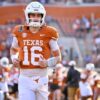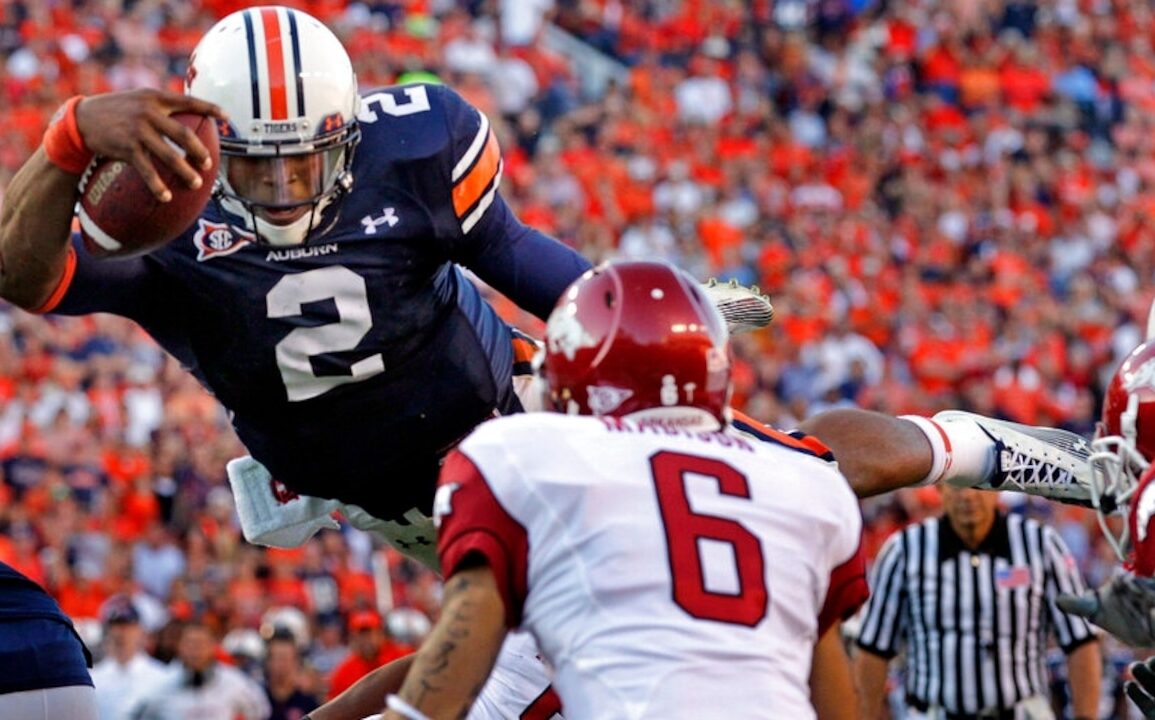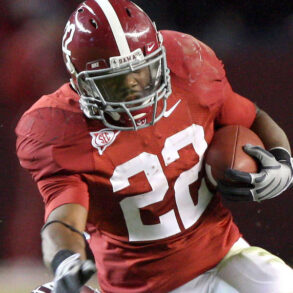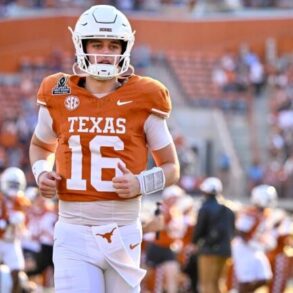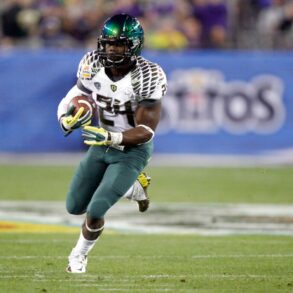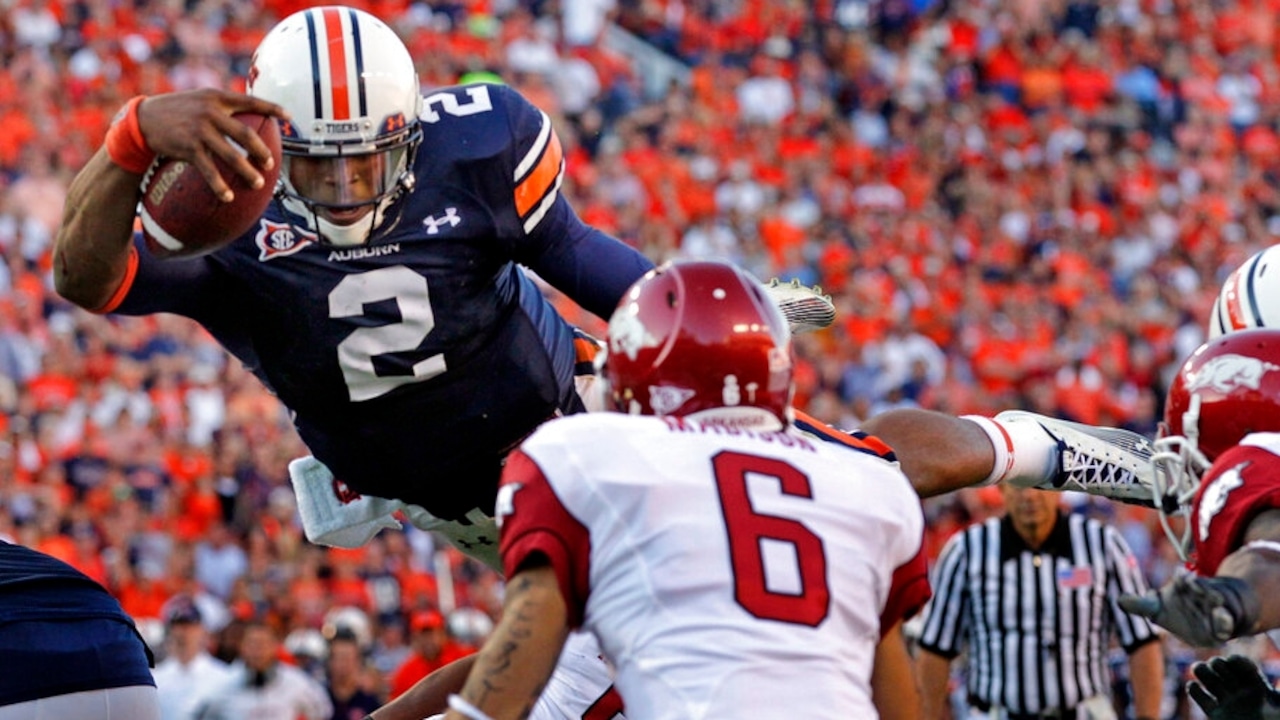
The College Football Hall of Fame ballot for its Class of 2025 included three former Auburn stars among the 77 players on the NCAA FBS portion.
Linebacker Gregg Carr was chosen as a member of Class of 2025, leaving guard Ed King and linebacker Takeo Spikes to wait for next year.
Next year starts on Monday, when the ballot for the Class of 2026 is scheduled to be released.
King and Spikes are among the 26 former Auburn players who are eligible for the Class of 2026 ballot, with center Reese Dismukes entering the eligibility window for the first time. That doesn’t include 19 Auburn alumni who meet the first standard for consideration for the College Football Hall of Fame but aren’t in the current eligibility window.
That’s 45 players from Auburn with the possibility of becoming Hall of Famers someday.
To be considered for the College Football Hall of Fame today, a player must have been a first-team All-American selection by one of the organizations that the NCAA uses to compile its annual consensus All-American team. Currently, those organizations are the American Football Coaches Association, Associated Press, Football Writers Association of American, Sporting News and Walter Camp Football Foundation. But the selectors used by the NCAA have varied over the years.
Players aren’t considered for the College Football Hall of Fame until 10 full seasons after their final college campaign. They also aren’t considered while they are active professional players. Auburn hasfive players who meet the All-American standard but aren’t eligible yet because their final season with the Tigers came in 2015 or later and/or they’re still playing professionally.
Players also aren’t considered if their college careers ended more than 50 years ago, so any player who completed his time with Auburn before 1976 isn’t eligible for the 2026 ballot. The Tigers have 14 players who meet the All-American standard but are outside the 50-year window.
Those players still can be considered for the College Football Hall of Fame, but their qualifications are examined by the Football Bowl Subdivision Honors Review Committee, bypassing the ballot.
King qualified for the ballot as a unanimous All-American. Spikes was a non-consensus All-American.
A unanimous All-American is a player who was a first-team selection for all the organizations used by the NCAA to compile the consensus All-American team for that season.
A consensus All-American usually is a player who was a first-team selection for at least half of the organizations used by the NCAA to compile the consensus All-American team. It’s possible to become a consensus All-American without reaching the halfway mark.
For consideration for the College Football Hall of Fame, players don’t have to be consensus All-Americans – just first-teamers for the right selector.
Former Auburn players eligible for the College Football Hall of Fame whose careers ended more than 50 years ago include (presented alphabetically with their All-American qualifying standards):
Linebacker Ken Bernich: Consensus in 1974
Center Jackie Burkett: Non-consensus in 1958
Defensive tackle David Campbell: Non-consensus in 1968
Fullback Joe Childress: Non-consensus in 1955
Tackle Frank D’Agostino: Non-consensus in 1955
Halfback Monk Gafford: Non-consensus in 1942
Defensive back Buddy McClinton: Consensus in 1969
End Jim “Red” Phillips: Unanimous in 1957
Tackle Ken Rice: Non-consensus in 1959 and consensus in 1960
Back Jimmy Sidle: Non-consensus in 1963
Guard Zeke Smith: Consensus in 1958 and non-consensus in 1959
Defensive tackle Jack Thornton: Non-consensus in 1965
Center Caleb Warrington: Non-consensus in 1944
Defensive back Larry Willingham: Consensus in 1970
Former Auburn players currently eligible for the College Football Hall of Fame ballot include (presented alphabetically with their All-American qualifying standards):
Linebacker Aundray Bruce: Consensus in 1987
Punter Lewis Colbert: Non-consensus in 1985
Linebacker Kurt Crain: Non-consensus in 1987
Punter Terry Daniel: Consensus in 1993
Linebacker Karlos Dansby: Consensus in 2003
All-purpose/kick returner Chris Davis: Non-consensus in 2013
Center Reese Dismukes: Consensus in 2014
Kicker Damon Duval: Consensus in 2001
Defensive tackle Nick Fairley: Consensus in 2010
Running back Brent Fullwood: Unanimous in 1986
Offensive tackle Wayne Gandy: Consensus in 1993
Guard Ed King: Non-consensus in 1989 and unanimous in 1990
Running back Tre Mason: Non-consensus in 2013
Offensive tackle Marcus McNeill: Consensus in 2005
Quarterback Cam Newton: Consensus in 2010
Offensive tackle Victor Riley: Non-consensus in 1997
Defensive back Brian Robinson: Consensus in 1994
Defensive tackle David Rocker: Consensus in 1990
Cornerback Carlos Rogers: Consensus in 2004
Wide receiver Frank Sanders: Non-consensus in 1990
Offensive tackle Stacy Searels: Non-consensus in 1987
Defensive back Chris Shelling: Non-consensus in 1994
Linebacker Takeo Spikes: Non-consensus in 1997
Center Ben Tamburello: Unanimous in 1986
Running back Carnell “Cadillac” Williams: Non-consensus in 2004
Offensive tackle Lee Ziemba: Consensus in 2010
Former Auburn players who meet the All-American standard for the College Football Hall of Fame but are not yet eligible for consideration include (presented alphabetically with their All-American qualifying standards):
Defensive tackle Derrick Brown: Unanimous in 2019
Kicker Daniel Carlson: Non-consensus in 2017
Defensive end Carl Lawson: Non-consensus in 2016
Cornerback Roger McCreary: Non-consensus in 2021
Guard Braden Smith: Non-consensus in 2017
Auburn has nine players in the College Football Hall of Fame (presented alphabetically with their All-American qualifying standards):
Wide receiver Terry Beasley: Unanimous in 1971
Linebacker Gregg Carr: Consensus in 1984
Fullback Ed Dyas: Non-consensus in 1960
Halfback Tucker Frederickson: Consensus in 1964
Halfback Jimmy Hitchcock: Consensus in 1932
Running back Bo Jackson: Consensus in 1983 and unanimous in 1985
Defensive tackle Tracy Rocker: Consensus in 1987 and unanimous in 1988
Quarterback Pat Sullivan: Unanimous in 1971
One of College Football Hall of Fame members from Auburn does not meet the currently used All-American standard – center Walter Gilbert, who played for the Tigers from 1934 through 1936.
Players on the College Football Hall of Fame ballot are nominated by athletic directors, head coaches and sports-information directors at National Football Foundation-member schools.
The FBS nominees are sorted geographically for eight District Screening Committees. The committee members vote on which players will represent their region on the ballot. Players who received significant support in the final voting in the previous year but did not make the College Football Hall of Fame also are held over on the ballot automatically.
The more than 12,000 members of the National Football Foundation then get the annual ballot for their consideration.
After the vote, the NFF Honors Court considers recommendations from the veterans committee, reviews the voting and chooses the members of the Hall of Fame class.
Mark Inabinett is a sports reporter for Alabama Media Group. Follow him on X @AMarkG1.
This post was originally published on this site be sure to check out more of their content.



